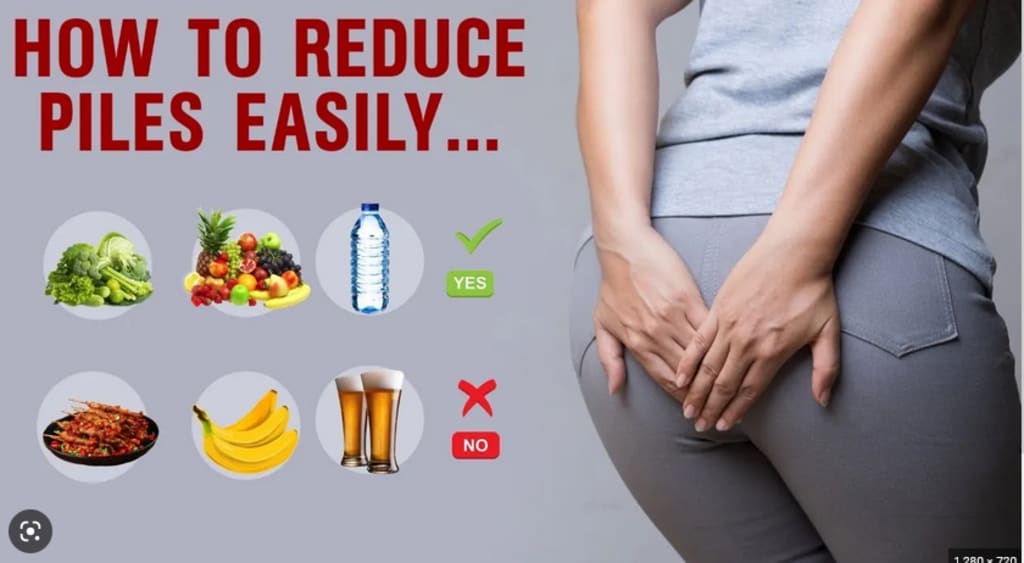Piles – Symptoms, Causes, and Treatment of Piles
Types of Piles

Piles: According to research, 40% of the Indian population is a victim of piles. In most cases, hemorrhoids can be treated and treated through medication and dietary changes. And, it is also estimated that only 10% of cases require surgical treatment for piles. In this article, we will read what are hemorrhoids, piles, or piles, what are the causes of piles, what are the symptoms of piles, and what are the treatments and remedies of piles.
Piles – also known as Hemorrhoids in which your blood vessels around the anus and rectum swell. The veins of hemorrhoids are located in the lowest part of the anus. Sometimes these veins become inflamed, causing the walls of the vein to swell and become thinner, which can make it difficult and painful to pass urine or stool.
Types of Piles
On the basis of the origin and morphology, piles are broadly classified into:
Internal Hemorrhoids: Occurs in the anal canal and anus.
External Hemorrhoids: Outside the anal canal at or near the anal opening.
Symptoms of Piles
In most cases, hemorrhoids resolve on their own with dietary changes. But as long as you have piles, you will have to suffer with piles symptoms – which can be a very unpleasant experience.
Anyone of any age can be affected by hemorrhoids. They are very common, with approximately 50% of people experiencing them at some point in their lives. However, they are usually more common in elderly people and during pregnancy.
In most cases patients suffering from piles may have the following symptoms:
Feeling of a hard lump around the anus, this may be due to the presence of clotted blood and may be very painful
persistent pain when passing stool
Discharge of mucus present in the stool and presence of blood in stool
feeling full even after defecating and going to the toilet
Gastrointestinal infection and bleeding
itching around the anus
the area around the anus may be red and sore
Causes of Piles
The causes of piles can be many. The symptoms of piles may cause the blood vessels around the kidney to dilate under pressure which may then enlarge. Varicose veins usually occur when there is increased pressure in the lower rectum. This can be due to the following piles:
lack of fiber in the diet
consumption of highly processed food
recurring constipation
severe diarrhea
heavy lifting
straining while passing stool
risk of hemorrhoids
Severe constipation and diarrhea can be a symptom of piles.
Taking excessive stress can cause piles.
People with obesity and overweight can have piles.
You can also get this disease due to a lazy lifestyle
Pregnancy is one of the major risk factors for hemorrhoids because the growth of the baby puts pressure on the pelvis. And the anus and anus can lead to enlargement of blood vessels and the consequent development of hemorrhoids. These piles disappear with the birth of the child.
Diagnosing Piles
A doctor can usually diagnose hemorrhoids after performing a physical examination. They will examine the kidneys of the person with suspected hemorrhoids.
Piles treatment and remedies
In the majority of cases, hemorrhoids resolve on their own without the need for any treatment. However, some treatments can help greatly reduce the discomfort and itching that many people experience with hemorrhoids.
Lifestyle Changes
Treatment of Piles
A doctor will initially recommend some lifestyle changes to manage piles.
1. Diet
Hemorrhoids can be caused by straining during bowel movements. Excessive straining is the result of constipation. Dietary changes can help keep stools regular and soft. This includes eating more fiber, such as fruits and vegetables, or eating primarily bran-based breakfast cereals.
2. Water
A physician may also advise the person with piles to increase water consumption. It's best to avoid caffeine
3. Lose Weight
Losing weight can help reduce the incidence and severity of piles.
4. Exercise
To prevent hemorrhoids, doctors also recommend exercising and avoiding straining to pass stool. Exercise is one of the main therapies for hemorrhoids.
About the Creator
Enjoyed the story? Support the Creator.
Subscribe for free to receive all their stories in your feed. You could also pledge your support or give them a one-off tip, letting them know you appreciate their work.






Comments (1)
It is concerning to learn that 40% of the Indian population is affected by this condition. Your article provides a detailed explanation of what piles are, the types of piles, the symptoms, and the causes of piles. It's also great to know that in most cases, hemorrhoids can be treated through lifestyle changes and medication. The lifestyle changes you have recommended, such as increasing water consumption, adding more fiber to the diet, and regular exercise, are practical and easy to incorporate into our daily lives. I appreciate the emphasis on the importance of exercise in preventing hemorrhoids, as physical activity is often overlooked in discussions about piles. Your article provides valuable information that will help many people suffering from piles. I look forward to reading more articles from you on this topic. Keep up the good work!